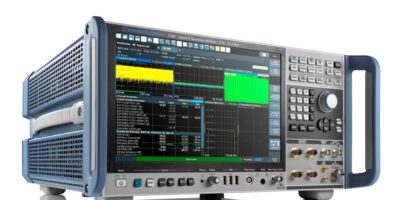To drive network traffic visibility for cloud computing environments, Rohde & Schwarz has introduced the VPP (vector package processing) -native OEM DPI (deep packet inspection) engine, the R&S vPACE. Using VPP, it efficiently identifies and classifies IP traffic for VNFs (virtual network functions), CNFs (cloud native network functions) and 5G UPFs (user plane functions) for real time, deep traffic insights.
R&S vPACE combines traditional DPI techniques such as statistical / heuristical and behavioural analyses with metadata extraction and encrypted traffic intelligence (ETI) to accurately and reliably identify and classify protocols, applications, and services.
Advanced ETI techniques include machine learning, deep learning and high-dimensional data analysis. They enable traffic inspection in the cloud to be extended to encrypted traffic, including using protocols and techniques such as TLS 1.3, TLS 1.3 0-RTT, ESNI, ECH, DoT and DoH. R&S vPACE can also handle network traffic that is obfuscated and anonymised, for example, traffic that is delivered via CDNs and VPNs, and traffic that is masked by randomisation and domain fronting.
R&S vPACE features a comprehensive, frequently updated signature library and well-defined APIs for seamless integration. It supports first packet classification using smart caching techniques. According to Rohde & Schwarz, the use of VPP pushes DPI processing speeds and improves average clocks-per-packet ratio to accelerate operation by up to three times, compared with the earlier generation of DPI engine. It also boasts a memory footprint of less than 400 bytes per five-tuple connection and 700 bytes per network endpoint. It also enables thread-safe endpoint access across multiple worker cores.
VPP’s vector-based batch processing using a locally-stored vertex memory cache, reduces CPU and energy consumption, allowing our DPI technology to deliver unrivalled performance and scalability in cloud and virtualised environments,” said Dr. Martin Mieth, vice president engineering at ipoque, a Rohde & Schwarz company, specialising in network analytics software for the communications industry.
Network functions ranging from policy control and traffic management to analytics functions are given application awareness by vPACE. This allows for granular traffic rules and policies to be applied not only to application types, but also to different services such as messaging, chat and video. It also provides cloud security tools such as firewalls, IDS / IPS and UTM with timely insights on suspicious and anomalous traffic patterns for an effective detection of cyberthreats and fraud.







